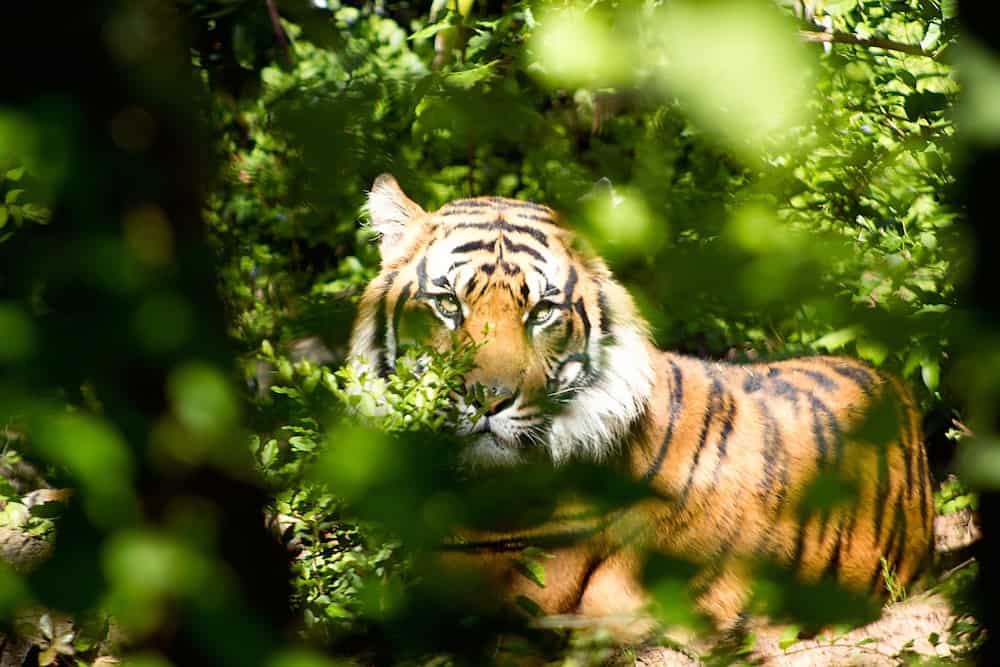The average human goes through around 100 toilet rolls per year. No surprises then, that this everyday household item is responsible for the destruction of large swathes of forest across the globe. Here we explore the issue with tissue, the forests paying the price, and what we can do about it (pssssst…bamboo!).
We cut down 27,000 thousand trees every single day. Just. To. Make. Toilet. Paper. Yes, you read that correctly. We treat loo roll as if it’s an infinite resource, we’re obsessed with having the ‘softest’, ‘strongest’, most ‘velvety’ paper made from virgin pulp. All this to wipe after going for a whizz? It’s incredible really that something as innocuous as toilet paper can cause such destruction to our planet. Aside from installing bidets into every single home and ditching loo roll altogether (which let’s face it, ain’t going to happen) what can we do to prevent humanity flushing the world’s forests down the toilet? Because good luck surviving in a world without trees.
The Issue With Tissue
In America alone, the annual spend on toilet paper is USD$6 billion. The environmental cost is equally eye-watering. To feed the demand, it takes 1.7 trillion litres of water, 250,000 tonnes of bleach, and 15 million trees. Add the rest of the world’s TP consumption into the equation, and we’re looking at even scarier figures. Once you’ve digested the numbers, it’s perhaps not quite as astonishing to learn that 15% of global deforestation is due to toilet paper. And forests are essential! Not only do they provide the air we breathe and a home to millions of species, but they also store vast amounts of carbon. In a nutshell, they protect us from the worst impacts of climate change.
The Forests Paying The Price
Three main regions across the globe provide the raw materials (i.e. trees) for the toilet paper industry:
The rainforests of Sumatra
It’s happening on our doorstep. In 2012, a WWF report focusing on Sumatra revealed the devastating consequences of APP (the fifth largest producer of toilet paper in 2008). It states “Since 1985, Sumatra has lost more than half of its forest cover, leaving less than 31 million acres. With only about 400 Sumatran tigers and fewer than 2,800 Sumatran elephants left in the wild, this last remaining habitat is critical to the survival of these species.” And that APP “is responsible for more forest destruction in Sumatra than any other single company.” It seems we are choosing toilet paper over tigers.
The Boreal Forest, Canada
Spanning over one-billion acres, the Boreal Forest holds approximately 12% of the world’s carbon stores (more than any other forest biome on the planet). According to a 2019 report by The Natural Defence Council and Stand.Earth, industrial logging fueled by TP companies is making light work of destroying it. In one nine-year period (from 1996 – 2015) over 28 million acres were cleared, disrupting indigenous communities, destroying natural habitats of myriad wildlife species, and leaving vast swathes of land barren. Due to the nature in which the area has been logged (i.e. by clearcutting, a method that removes all trees from an area), estimates suggest it will take at least 100 years for regions of the Boreal to return to its pre-logged condition. Yikes.
Great Northern Forest, Sweden
According to this 2017 Greenpeace report, “around 68% of Sweden’s land area is classified by the government as forest land”. However, since the introduction of industrial logging in the 1950s, much of this ‘old-growth forest’ has been replaced with industrial timber plantations. Now, over 60% of all forest in Sweden is less than 60 years old (which isn’t mature enough to harvest). Thanks to the TP industry’s increasing demand for virgin pulp, large parts of Sweden’s Great North Forest are at risk, and only 7.5% of the forest is officially protected. The clearcutting in Sweden’s forests has also led to a decline in hundreds of forest species, including plants, animals, fungi, and lichen. All so we can continue to wipe with virgin pulp, quilted toilet paper. Seems crazy, right?
So what can we do about it?
The thing is, we don’t need to rely on virgin tree pulp to create toilet paper! There’s a 100% biodegradable, 100% sustainable, and 100% renewable alternative that’s available now (and feels exactly the same as a wood product): bamboo! In recent years, we’ve seen organisations like NooTrees emerge as forerunners in the battle against deforestation. It uses bamboo across its entire product range (including toilet paper, wet wipes, and facial tissues). Why? It takes 30 years to grow a tree, while bamboo only needs three years to reach maturity. Meaning it can produce five to six times more raw material than trees during the same timeframe. It also doesn’t need perfect arable land on which to grow. Instead, it can work its magic in even the most degraded soil. In addition to its sustainable products, NooTrees also uses sustainable packaging. Its oxy-biodegradable packaging degrades in only three years (with the exception of wet wipes, which need particular packaging in order to retain moisture).
Switching your toilet paper from virgin tree pulp to a bamboo product is a #LittleGreenStep we can all take. And for the sake of saving our forests and hundreds of endangered species, it’s a small price to pay #MakeTheSwitch.
This article is brought to you in collaboration with NooTrees.


